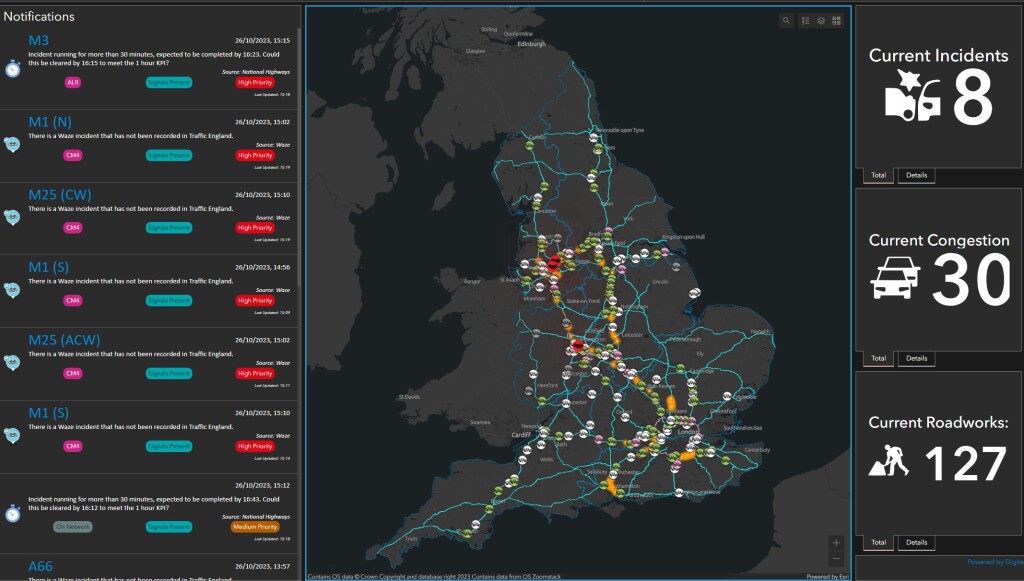Late last year, it was announced that National Highways, the agency which manages and maintains motorways and major A roads in the United Kingdom, had received an Esri Special Achievement in GIS Award, making it the only UK winner. The prize was the result of the company’s “innovative use of geospatial technology, enabling a quicker response to incidents on the road network,” according to Esri UK’s announcement.
Esri’s Special Achievement in GIS Awards are “designed to demonstrate an appreciation for organizations around the world that are using GIS technology to understand vast amounts of data and solve complex problems.” The winners are ultimately selected by Esri Founder and President Jack Dangermond.
National Highways has been using Esri GIS products to support its Digital Roads strategy, bringing all geospatial data and applications into a singular portal. A major part of this work has been the creation of a singular digital model of the Strategic Road Network (SRN), giving all staff the same real-time view for the first time. Per Esri’s release, all control rooms around the nation are using what’s called a Single View of the Network (SVN) dashboard of incident alerts, details of roadworks, weather updates, and the location of traffic officers within an interactive map.
Geo Week News spoke over email with Davin Crowley-Sweet, National Highways’ Chief Data Officer, about the work. In response to questions about the impetus to set up this GIS program, he said, “To deliver the objectives of our ‘Information Vision and Strategy' we needed a new approach to support the whole organization help foster a data-driven culture, increasing business benefits and be fit for purpose on future ambitions such as connected and automated vehicles, sustainability, and net zero goals.”
“We raised the profile and urgency of geospatial data within National Highways by demonstrating its value and criticality in decision making from the results of an in-depth asset evaluation which valued data as an asset at £60 billion. It concluded that spatial data is the ‘crown jewels’ of our data landscape – the primary key of primary keys.”
He noted to Geo Week News that previously, much of this work had been siloed by region and system, putting them in “the envious position” of having to work through multiple sources of truth, leading to inconsistent inputs across the business. Now, he says, the model is “a centralized, governed, and assured digital representation of the Strategic Road Network (SRN).”

The benefits of implementing this single source of truth have been readily apparent to this work. In the announcement of the award, they note that this system has allowed users to predict problem locations and deploy traffic officers more quickly, among other benefits. Crowley-Sweet also pointed towards these other benefits:
- “Seeing more to have easily accessible data within a unified platform
- Seeing earlier by harnessing live information across a broader spectrum of datasets that flow into our Regional Operational Centers and
- Reacting faster through the integration of real-time analytics and heightened awareness of critical locations
- Seeing earlier visibility of incidents, increased availability and optimisation of resources, real-time tracking of metrics and KPI performance and promotes uniform operational procedures across all regions.”
With all of this success already, it’s no surprise that National Highways is looking ahead to how they can enhance this model and gain even more benefit from the work. Crowley-Sweet told Geo Week News that they are looking continue maximizing value from spatial data to provider safer, smoother, and more reliable journeys to customers. He continued, “Regarding the Network Model, new capabilities will allow users to model the network in the past, present, future, and in 3D. Our vision for the digital roads of the future will incorporate new digital capabilities, such as digital twins, predictive planning, single view of assets, and connected autonomous vehicles. Each of these initiatives will require a common, trusted representation of the network to be successful.”






